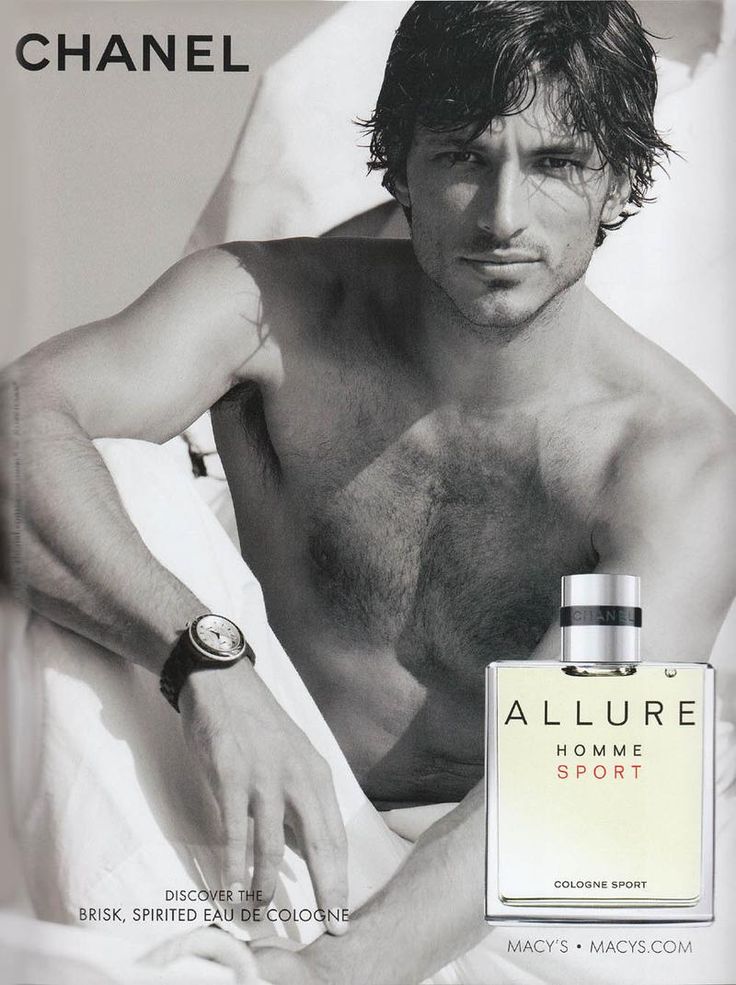
Textual Analysis – Name of product in the middle of advertisement. Image of a man sitting down with a woman sitting on his shoulder. Image of the fragrance in the bottom right-hand corner. Small text at bottom of the page.
Semiotic Analysis – Dominant signifier is of the man sitting down with a woman sitting on his shoulder. An iconic sign is of the fragrance itself. The indexical and symbolic signs are the stance that the man and woman are in, plus the clothes that they are wearing, as they imply a sexual feel to the product.
Representation – The representation in this advert is reactionary because it tries to use ‘sex’ to sell a fragrance. It does this through the stance that the man and woman are in, as well as the clothes that the woman is in. It also shows sexual tension between a heterosexual couple, rather than an lgbtq+ couple. This is reactionary because stereotypically straight couples are always shown in adverts, and lgbtq+ couples rarely receive representation in the mainstream media.

Textual Analysis – Name of product at the top left of advertisement. Large image of a shirtless man sitting down in the middle of the ad. Image of the fragrance in the bottom right-hand corner. Small text at the left bottom of the page stating who ‘discovered the fragrance + small text at the bottom right of the page.
Semiotic Analysis – Dominant signifier is of a shirtless man sitting down. An iconic sign is of the fragrance itself. The indexical and symbolic signs are the stance that the man is in. It displays power and masculinity. The name of the product is also an indexical sign because the word allure suggests that the fragrance is ‘alluring’ (defined as: powerfully and mysteriously attractive or fascinating; seductive).
Representation – The representation in this advert is reactionary because it attempts to use the model’s conventional attractiveness to sell its fragrance. The model is shirtless, showing a hairy chest and toned body (associated with masculinity). He also has a strong jawline and sharp features which are conventionally attractive. By using this model, the fragrance is suggesting that men who use that fragrance will also look attractive and have sex appeal.

Textual Analysis – Name of product at the top right of advertisement, with slogan above it in bold text. Large image of a shirtless man riding a horse in the centre of the ad. Image of the fragrance in his hand, with water spilling out from under it. Beach + sea in the background.
Semiotic Analysis – Dominant signifier is of a shirtless man riding a white horse. An iconic sign is of the fragrance itself. The indexical and symbolic signs are the stance that the man is in.
Representation – The representation in this advert is reactionary because it attempts to use the social concept of ‘smelling masculine’ to sell its fragrance. The model is shirtless and riding a white horse. He has a cut body with defined muscles. Again, the fragrance uses a conventionally attractive model to try to sell to male consumers. However, there is a humorous element to the advert. The model is in a rather comical pose, with his hand on his hip and body in a contorted pose. The slogan is also slightly humorous stating “smell like a man, man”.

Textual Analysis – Large image of a child in the centre of an ad. Wide text of the companies slogan layered across the child’s face.
Semiotic Analysis – Dominant signifier is of a child. The indexical and symbolic sign is the slogan that the company has used “The best a man can get”.
Representation – The representation in this advert is radical because it attempts to fight toxic masculinity through representation. Usually, male fragrance companies use the social construct of ‘being a man’ to try and sell their product, however, Gillette has flipped the coin on this approach by criticising the very idea of ‘being a man’ and instead suggesting that ‘men need to be better’. The image of a child paired with this slogan creates a more emotional response for viewers, and it suggests that the way to change is through youth.

Textual Analysis – Large image of a popular celebrity (Chris Hemsworth) in the centre of the ad. Text stating company name in the top right of the ad. Picture of fragrance in the bottom right of the ad. Fragrances slogan (hashtagged) in the bottom left. Above it is the description of the fragrance. The background is of a city.
Semiotic Analysis – Dominant signifier is of a famous celebrity in a suit. The indexical and symbolic sign is the slogan that the company has used “The man of today”. An iconic sign is the fragrance itself.
Representation – The representation in this advert is reactionary because it suggests that men have to look and act a certain way to truly ‘be a man’. By using Chris Hemsworth (a stereotypically masuline man) as the fragrances model, Boss becomes part of the problem concerning body image. It suggests that men need to be ‘cool’ and ‘sexy’ to really be a man. Also, by clothing him in a sharp snappy suit and photoshopping him in front of a city, the brand is again suggesting that men need to be a certain way to be accepted.
